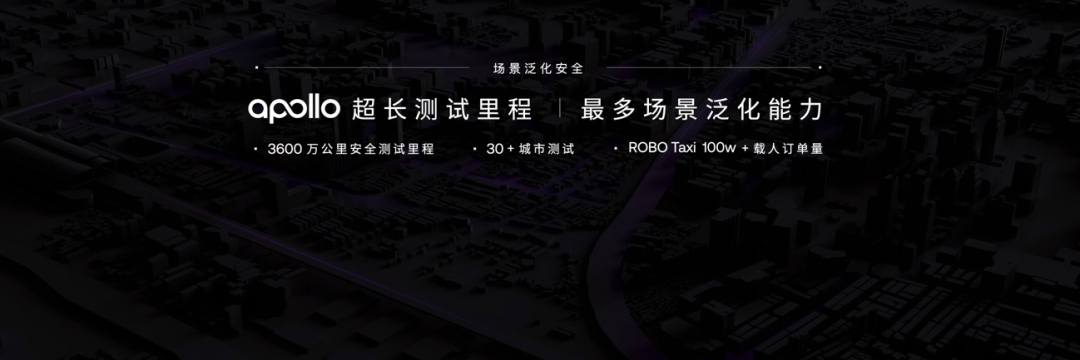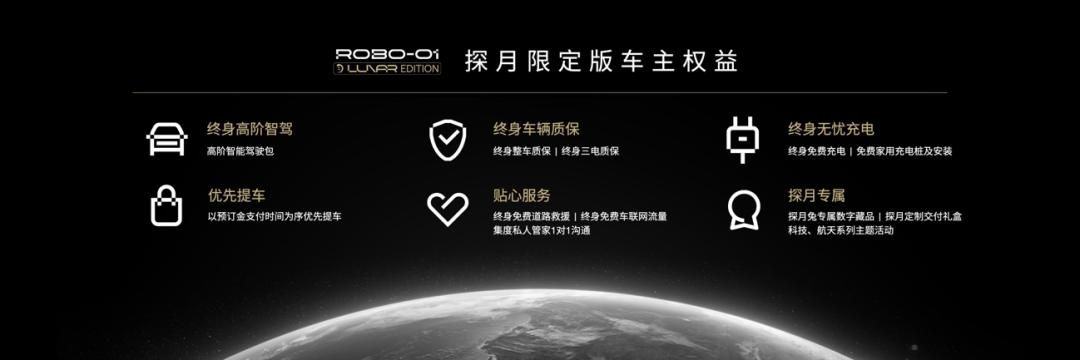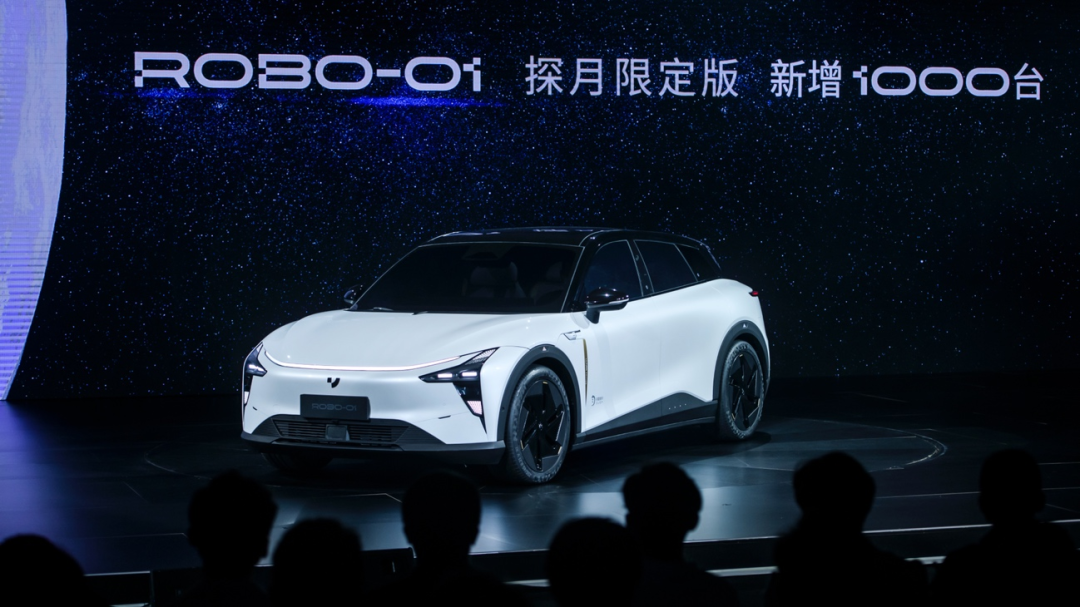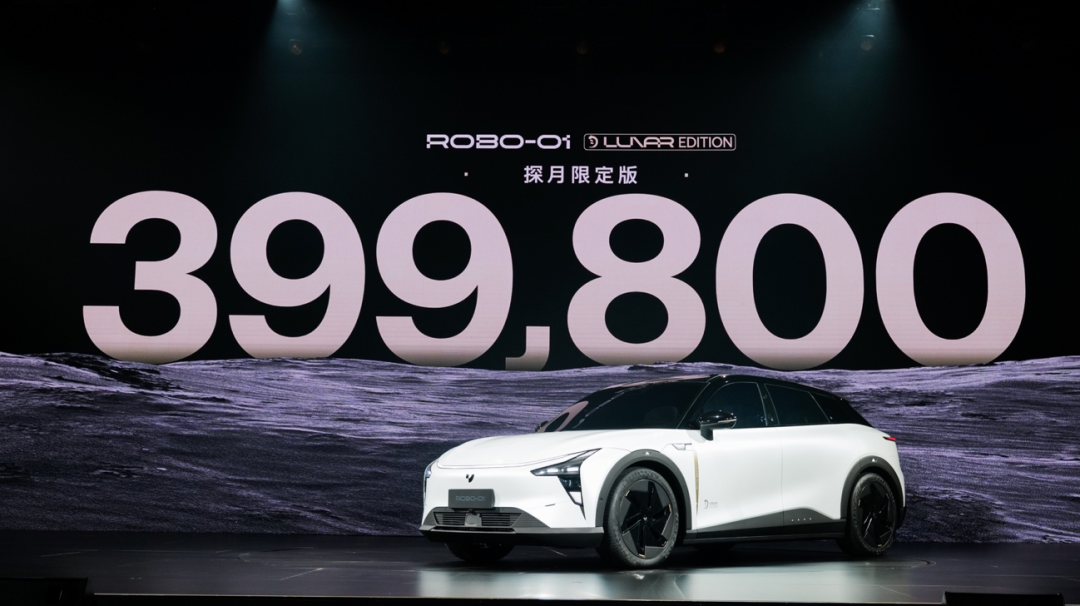Text by Karakush
Dostoevsky said, love specific people, not abstract ones.
Abstract people are beautiful, they exist in concepts; specific people are flawed.
In the era of Dostoevsky, they didn’t have as abstract things as Robin Li and his robot cars, for a long time, they couldn’t even draw a “豕” (“swine” in Chinese). Otherwise, he would have said that specific people are easy to get carried away by overthinking.
After a year and a half of abstraction, last night, Jidu finally released its first specific robot car, the ROBO-01 Lunar Exploration Limited Edition, and announced some specific parameters as well as a specific price of CNY 3,998,000.
A bit expensive, after all, it is a limited edition with a print run of only 1000 units. In September, Jidu mobilized its employees for private recruitment, all 1000 slots were filled, and last night, CEO Xia Yiping announced an additional 1000 units.
They seem very confident, doubling their output. However, if we take it seriously, it’s only a total of 2000 units.
Jidu has the prudence and restraint of a latecomer. Although they talk tough, saying “when the first generation of robot cars hit the market, that’s the real starting point for the smart car industry’s internal competition,” they don’t discriminate against anyone, whether they’re just prehistoric rubbish earlier than the starting point or just rubbish seated in the room. They move their body honestly and their position flexibly; offering limited editions as a trial and presenting configurations at a fairly humble and impeccable price.
Let’s take a quick look:
First of all, the hardware of contemporary smart cars is very abundant.
For example, using the 8295 chip, Qualcomm’s latest 5nm process vehicle-grade chip with AI computing power of up to 30TOPS, that delivers nearly eight times the performance improvement of the 8155 chip used by many others present here; “one can fight against eight”. And most importantly, “it must be the first domestic release”.
In terms of autonomous driving, the dual NVIDIA Orin X provides a bottom-up calculation power of 508 TOPS, with 31 intelligent driving sensors, including 2 LiDARs (as well as 5 millimeter-wave radars, 12 ultrasonic radars, and 12 high-definition cameras). Though not the most, it belongs to the top-tier.

Next is the data and algorithm for the intelligent driving of the head. Jidu claims that it can provide the most reliable point-to-point automatic driving experience in the industry and emphasizes that it can be used after delivery in 2023.
Compared with piling up materials, the actual scene coverage accumulated by Baidu Apollo over nine years, including 36 million kilometers of road testing, operation coverage in 30 cities across the country, Robotaxi orders of more than one million passengers, and the algorithms trained based on them, are Jidu’s most proud assets.

In addition, Jidu also has a self-developed high-level automatic driving intelligent architecture JET, which integrates calculation power, algorithm, and perception to generalize and process more scenarios, thereby driving algorithm iteration in a spiral promoting cycle. Technical details will not be elaborated here.Currently, Jidu has conducted scene generalization testing in Beijing and Shanghai. A few days ago, they released an internal technology test video, showing Xia Yiping sitting next to Wang Weibao, testing the latest version of autonomous driving in Jading, a total distance of 20 kilometers, covering both urban and highway scenes. It was demonstrated that the vehicle can achieve unprotected left/right turns, automatic lane changes, high-speed driving, adaptive lane merging, straight through red lights, pedestrian avoidance, and deceleration for oncoming vehicles, and more.
Although it is not enough to indicate mass production readiness, high-level management has shown trust by demonstrating a certain attitude.
Thirdly, it is about the car’s quality. It is based on the Geely SEA platform and adopts a high-end model’s standard front double wishbone/rear multi-link suspension; with a zero to 100 km/h acceleration time of 3.9 seconds, front and rear permanent magnet synchronous dual motors, and a peak power of 400 kW; equipped with a Ningde era 100kWh ternary lithium battery and has a CLTC range of 600+km.
Very familiar. Or, if you think the extremely cool 001 car is not bad, then the Jidu ROBO-01 is basically the same. The two cars share a platform and factory. Many components are not exactly the same, but they are still closely related. For example, on the Jidu, you can also see a panoramic sunroof and four electric doors that close silently, which are coordinated with the millimeter-wave radar to detect the opening and closing of obstacles.
In short, it can “roll all the way.”
The End of Rolling
All of the above can be regarded as shockingly good, but it is difficult to say that it can form a “barrier.”
This has been a dilemma for many intelligent electric vehicles since last year. They boast impressive specifications and capabilities, but when thrown into the market, they seem commonplace and unremarkable, and the feedback is generally mediocre. One reason may be that the experiential breakthrough brought by technology and configuration has reached a platform period. Even if it has not yet reached the ceiling, everyone can see where the ceiling is.
 The so-called “million-dollar luxury car” configuration that existed three years ago, such as panoramic sunroof, frameless doors, air suspension, CDC, pixel headlights, lidar, hidden door handles, and even automatic doors, can now generally be found in cars priced at three or four hundred thousand yuan, or even two hundred thousand yuan. However, cost control and supplier management are the ultimate test. If someone takes the lead, they will surely be followed by others.
The so-called “million-dollar luxury car” configuration that existed three years ago, such as panoramic sunroof, frameless doors, air suspension, CDC, pixel headlights, lidar, hidden door handles, and even automatic doors, can now generally be found in cars priced at three or four hundred thousand yuan, or even two hundred thousand yuan. However, cost control and supplier management are the ultimate test. If someone takes the lead, they will surely be followed by others.
Even in the field of intelligent driving, the first to enter the market is now highly questioned. For example, the fastest to be implemented in China are XPeng and Huawei, deployed respectively in Guangzhou and Shenzhen. However, their reach is limited. Soon there will be NIO’s NAD, Great Wall’s Haval NOH, Li Xiang’s AD MAX, IM’s IM AD, and so on.
Everyone is striving to improve the point-to-point navigation assisted driving without human intervention. There is almost no huge technology gap. Even if the experience is not good, the difference in end-user experience is not too significant. It’s just a matter of who is earlier or who is later. Early deployment by each company will inevitably require a humble reminder to take over at any time. However, with the flow of talent and technology penetration, the gap will be eliminated and the price level will not be significantly different
At present, what seems impressive may only be the average level of high-end intelligent cars two or three years later. It’s not that we should stop here, but rather the product definition and brand are essential for a product to succeed in the market. This is also the primary work task and mission for Jidu as an independent company.
From the parts shown so far, Jidu has great potential. First of all, the design is aligned with that of a technology company in terms of style.Although the label of “car robot” itself is an extremely unlikable and unsuccessful setting, and may be considered an intelligent machine that works semi-autonomously or autonomously among cyberspace elites, the concept of a robot in the public consciousness is so far ahead of the current level of automobile technology that it becomes empty and meaningless.
However, Jidu has miraculously regained some dignity from the aesthetic and conceptual level.
For example, they incorporated a variable geometry mechanism in the design, including an active lifting tail wing, lifting speaker, and the concept car originally had a foldable steering wheel and a lift-able laser radar on the hood.
Although the last two were unsurprisingly canceled in the mass production version, they did not return to traditional design but instead strengthened the expression of simplicity. The laser radar was directly integrated into the headlamp, which should be the highest-integration headlamp in the industry, and also integrated pixel lamps, daytime running lamps, position lamps, and far and near-beam lamps.
The electric door does not have a handle, nor even a hidden handle. You can use common switch solutions such as buttons on the B-pillar, keys, central control, mobile phones, or external voice, which can recognize voiceprints.
The simplicity and consistency are also reflected in the interior, making it ten times more exciting than the appearance. It must be criticized that the white car paint matched with the front of the car will reveal the expression of an online car at bad angles, and the shyness cannot be dispelled even with 21-inch wheels. In fact, it would look more textured in gray.
In comparison, the interior is worth savoring. The 35.6-inch 6K integrated screen is not just large and high-definition, but importantly, it is not segmented or spliced. Although it only has demonstration images, there is at least something to look forward to.
For example, the 3D intelligent driving map vividly and clearly cyberizes the outside world into the car, appropriately landing on the screen in front of you. This is where Jidu’s original abilities are demonstrated, reportedly applying for more than 20 related patents. Its lane-level navigation integrates static maps and dynamic perception data, enabling free panning and transitioning.

Other multi-sensor vehicles on the market also have similar dynamic simulations, but they are often separated from map navigation into two images; Jidu does not have instruments or HUDs, nor does it display separate images on the screen. Rather, it puts all driving-related information into one exit, which is radical but beautiful.
There are few physical buttons inside the car. The U-shaped steering wheel is retained, while even the two side levers are removed and replaced with buttons.

This change is reliant on capabilities. For example, using voice to replace operations.
Jidu’s voice interaction provides additional stability, and with Baidu’s support, Jidu achieves full localization, does not rely on network signals, is fully offline and supports weak network environments such as tunnels, underground garages, and mountainous areas. In addition, speech recognition and semantic recognition are integrated and the speech recognition speed is reached 500ms, and the interaction speed is 700ms. It also supports multi-person parallel interactions.The ability to achieve this upgrade is due to the computational power increase of the 8295 chip, as mentioned above, the 3D navigation is also included.
The concise underlying logic can also be understood as a kind of robotization, removing human labor. In contrast to the past, human modifications of tools involved increasing human involvement, while the characteristics of robots or AI is to eliminate human labor (intelligence/labor). That being said, it cannot be said that LOEN is omnipotent.
Furthermore, from the current marketing activities, we can loosely see LOEN’s self-awareness and long-tail strategy, as well as its focus on technology.
For example, this limited edition vehicle was created in cooperation with Chinese lunar exploration, its body, wheels, and interior have special designs, and it is decorated with golden elements inspired by the gold protective material on spacecraft, with its white body matching the lunar lander cabin and even having a simulated moon scent. They’re very creative.
Furthermore, LOEN has collaborated with renowned writer Liu Cixin, who is the owner of limited edition car 004 (can you guess who the first three owners are?). They are also limited to selling 8295 Chinese lunar rabbit digital collections, which are quite trendy.
While the earlier original universe launch event in the first half of the year had a flavor of “P2P ready to run away,” now, with the blessing of the actual car, LOEN seems to have a grand vision for humanity, the future, and the universe.
Moving forward, in addition to scheduled mass production, LOEN still needs to overcome two main challenges: the shortage of tech talent and the constraints of the ICV market.First of all, there is the issue of Baidu’s brand negative assets. When users hear about Baidu, they instinctively think of the opportunity for advertisements. How can we cut this misconception while preserving the support of a large company and without slowing progress?
Another issue is that the electric vehicle market has developed to the point where mainstream consumers are migrating to a more conservative demographic. In this context, is there still any room for products like the Jidu, which have a high degree of personality? To be honest, just the steering wheel alone may deter some people, and there is a learning curve.
Jidu’s team has shown some shrewd moves. For example: in terms of reservation benefits, in addition to the industry average, notable features include a lifelong high-level intelligent driving package, lifelong vehicle quality assurance, and lifelong free charging.
Jidu’s “lifelong” entitlements mean “people over cars” – which means that at any time in the future, replacing any Jidu model still entitles the owner to those free benefits. Moreover, future cross-car usage scenarios such as additional purchases or rentals are gradually being worked into the picture.
Spending a little money can win the word-of-mouth of seed users, but some brands are just too stubborn and unwilling to learn.
Looking ahead, Jidu is expected to release an ordinary version, originally planned not to exceed the Model Y. The latter is priced at 2.89 million-3.979 million yuan after adjustment. According to common industry practice, it is likely that it will become a single-motor long-endurance model, with electric doors and a steering wheel which may prove hazardous.
Don’t compromise capabilities too much, be competitive on prices and throw in a few small favors. There is still room for opportunity.


This article is a translation by ChatGPT of a Chinese report from 42HOW. If you have any questions about it, please email bd@42how.com.
